Ghost BURN is one of the most successful fat burners on the market, but it has a minor issue: it competes for love with an even more popular supplement in Ghost Legend!
As a stimulant-based fat burner, morning users of Ghost Burn are generally forced to decide whether they want to feel the Burn or if they want to drink coffee, an energy drink (like Ghost Energy), or a pre-workout (like Legend). Due to the popularity of those latter two choices, Burn would sometimes get the short end of that stick. And that's a shame, because it's a fantastic formula.
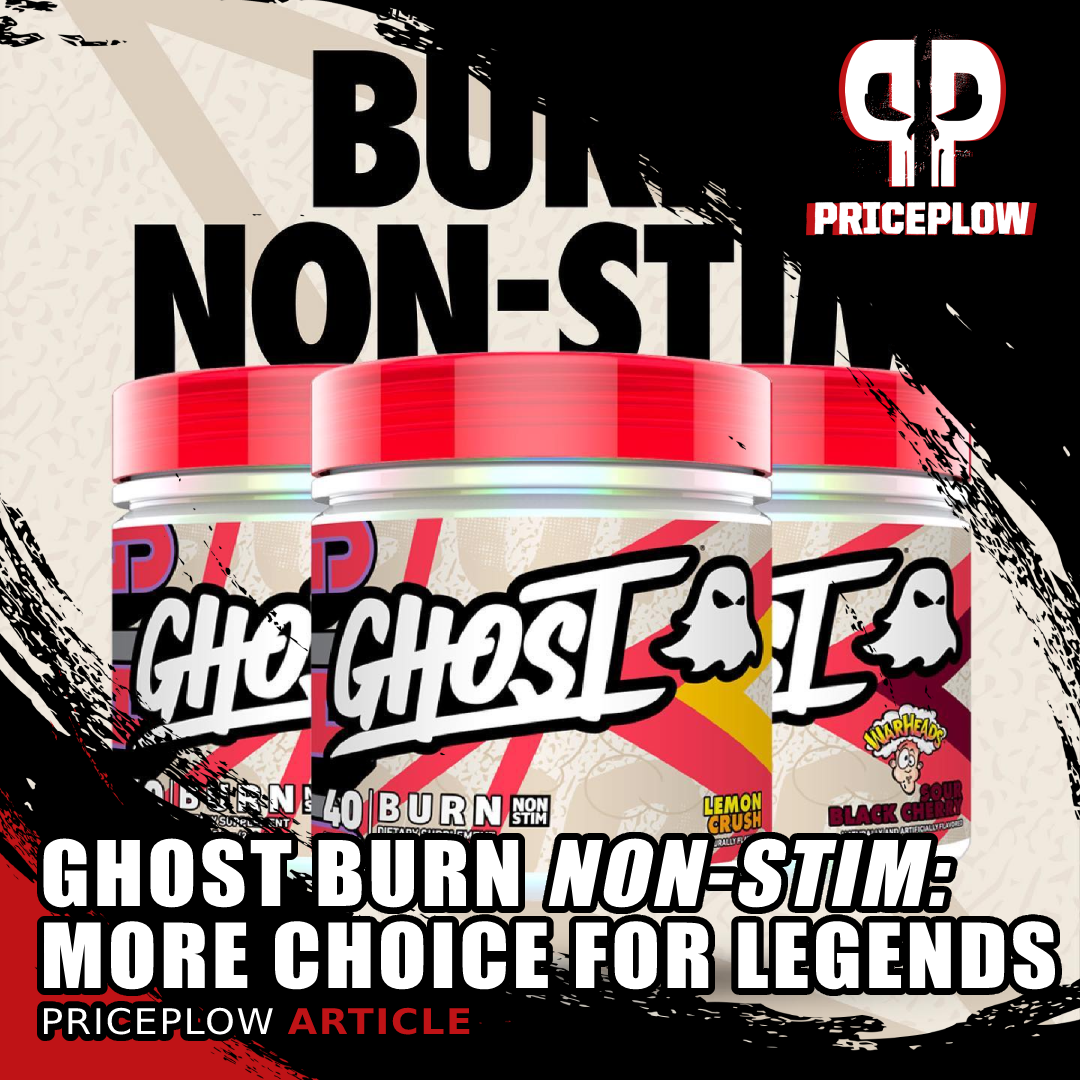
Ghost Burn Non-Stim is here, so Legends never have to choose between Burn and their other favorite stims!
Decide no more: now you can do both with Ghost's latest release:
Ghost Burn Non-Stim: For Legends who want a stim-free burn
Ghost Burn Non-Stim solves the problem for those who want it all. Now you have a top-tier fat burning powder that can be stacked with any stimulant you want, because this one has none! It's based off of the original Ghost Burn formula, packed with tons of L-carnitine, but is also boosted with novel ingredients like MitoBurn L-BAIBA.
And of course, the burn is still there in a clinical dose of CaloriBurn grains of paradise extract. The whole story is below, but first, check PricePlow's coupon-powered price alerts:
GHOST Burn Non-Stim – Deals and Price Drop Alerts
Get Price Alerts
No spam, no scams.
Disclosure: PricePlow relies on pricing from stores with which we have a business relationship. We work hard to keep pricing current, but you may find a better offer.
Posts are sponsored in part by the retailers and/or brands listed on this page.
This area is reserved for Team PricePlow's upcoming Ingredients video.
Subscribe to our channel and sign up for notifications so you catch it when it goes live!
Ghost Burn Non-Stim Ingredients
Here's what you get in a two scoop (10 - 10.5g) serving of stim-free Burn:
-
GHOST Carnitine Blend - 3000 mg
No stims inside but amped up with MitoBurn, so you can stack with stims like Legend or Ghsot Energy!
Kicking things off the same way as the original Ghost Burn (and Ghost Burn Black), we get a large 3 gram dose of L-Carnitine by way of 1.5 grams of Carnipure L-Carnitine L-Tartrate (LCLT) and 1.5 grams of Acetyl-L-Carnitine HCl (ALCAR).
Before getting into the specifics of each one, let's discuss carnitine's role in general:
Carnitine for dieters: the fatty acid transporter
Carnitine has a critical role in our body's production of usable energy because it supports fatty acid transport to the mitochondria in our cells so that they can make ATP (adenosine triphosphate).[1] We consider mitochondria to be the "powerhouses" and ATP is the "energy currency" that our cells require.
L-carnitine is a conditionally essential amino acid, meaning that the body can synthesize it, but can nearly always use more of it. It's estimated that roughly 75% of the body's "carnitine pool" is from dietary intake,[2,3] so we consider it more "essential" than not, and it's best to get it in by eating red meat and supplementing.
Energy production, weight loss, athletic recovery, and many other benefits run far better with more carnitine.[4] A significant amount of the successful research uses 2 grams per day, and Ghost goes beyond that in a full two-scoop serving, making sure your body has the tools it needs to move fatty acids to burn them.
Carnitine's best for...
When it comes to diet and weight loss, the studies where carnitine performs best are in the demographics where carnitine stores are low:
- Vegans / vegetarians[5-8]
- The elderly[9,10]
- Hard-training athletes[4]
This makes sense, since carnitine is most abundant in red meat -- so those who aren't eating enough of it are those who should consider jumping into two scoops here.
Metabolic benefits of carnitine
"L-carnitine function. l-carnitine shuttles long-chain fatty acids inside the mitochondria by forming a long chain acetylcarnitine ester. The complex is then transported into the mitochondrial matrix by carnitine palmitoyltransferase I (CPT I) and carnitine palmitoyltransferase II (CPT II). The fatty acids are then broken down through the process of β-oxidation to deliver the 2-carbon molecules to the Krebs cycle, leading to the generation of energy under the form of adenosine triphosphate (ATP)."[4]
Digging deeper into a 2016 meta-analysis performed on nine placebo-controlled studies, researchers found that L-carnitine supplementation consistently helps with weight loss and body mass index (BMI) reduction compared to placebo.[11]
For instance, one study in 2009 found that 2 grams of carnitine for six months improves insulin sensitivity and overall blood sugar response.[12] These measures indicate a better metabolism and suggest better overall health, energy, and utilization of carbohydrates. Chromium picolinate, another ingredient inside, will further help with this, so we'll cover insulin sensitivity a bit more below.
L-carnitine for athletes
Above, we mention that vegans, vegetarians, and hard-training athletes do best with carnitine. Carnitine supports athletes not necessarily because they're eating poorly, but because they burn through their carnitine stores so much faster than the average individual.
A 2018 review titled "L-Carnitine Supplementation in Recovery after Exercise" covers carnitine supplementation for athletes in great depth, citing nearly 100 studies that support its use for improving power, improving recovery and reducing soreness, enhancing oxygen utilization, and boosting overall blood flow.[4]
When discussing L-carnitine's athletic benefits, it's best to reference a 2018 review published in Nutrients titled "L-Carnitine Supplementation in Recovery after Exercise".[4] Inside, the researchers cite nearly 100 studies, concluding that carnitine supplementation improves power, reduces soreness, boosts recovery, increases oxygen use, and enhances blood flow on a consistent basis.[4]
On to the two specific forms:
L-Carnitine L-Tartrate - 1500 mg
Shortened to LCLT, L-Carnitine L-Tartrate is carnitine bound to tartaric acid, which is often used to impart additional flavor.[13] It is often the go-to carnitine for performance applications -- in the athletic review mentioned above, six studies were based upon LCLT consumption.[4]
Most notably, two studies have shown that LCLT boosts adrenal receptor density and response,[14,15] making it useful for those trying to maximize their hormonal potential.
However, it's not clear if LCLT specifically has any additional athletic benefits compared to ALCAR (used below) - it's just frequently used in athletic research.
Acetyl L-Carnitine HCl - 1500 mg
Commonly shortened to ALCAR, Acetyl L-Carnitine is a highly-bioavailable form of carnitine that crosses the blood-brain barrier.[16-18] It's been used in numerous applications and studies mentioned in our general carnitine description above, but also brings some added nootropic benefits.
One of the ways ALCAR supports cognition is with its added acetyl group, which can be used in various biological applications such as supporting acetylcholine, a cognition-supporting neurotransmitter. ALCAR can help improve choline uptake and acetylcholine synthesis.[16]
However, at the end of the day, we're happy to see over 2 grams of total carnitine - and it's nice to have a blend that can provide a few potentially different benefits. The 3g Ghost Carnitine blend has been helping Ghost athletes recover for years, and we see no reason for Ghost to change it.
-
Garcinia Cambogia (60% Hydroxycitric Acid) - 1500 mg
Making a return from the Ghost Burn Black edition (which is sold primarily through GNC), 1500 milligrams of garcinia cambogia is back for Burn Non-Stim. Although this ingredient may have gotten off on the wrong foot due to overzealous promotion from TV doctors, it actually provides some solid support for reduced appetite, increased lipid oxidation, and better overall fat loss.[19-21]
The stim-based Ghost Burn is back, and with a better grains of paradise extract -- CaloriBurn GP from NNB Nutrition!
The most pronounced effect we see is appetite suppression, which is important in a stimulant-free fat burner, since fat burners often rely on their stims to reduce appetite and cravings.
Its main bioactive constituent is hydroxycitric acid, often abbreviated as HCA. This molecule expresses powerful benefits that range from antidiabetic and hypolipidemic to anti-inflammatory, anticancer, and hepatoprotective.[19] It even helps support cognition through an anticholinesterase effect that helps keep choline levels higher.
HCA helps to inhibit some of the enzymes (such as adenosine triphosphate citrate lyase) that promote triglyceride, cholesterol, and fatty acid synthesis[19] -- helping to limit their creation by decreasing lipogenesis. Other studies have shown that it can promote insulin sensitivity,[22] which will pair well with chromium picolinate and l-carnitine.
A meta-review notes that 50-60% HCA content yields the most health benefits,[19] and that's right where Ghost is - with a solid 60% standardization and a decently high 1.5 gram dose.
-
MitoBurn (L-β-Aminoisobutyric Acid) - 500 mg
In order to ditch the stimulants but keep fat oxidation high, Ghost utilizes one of the supplement industry's most novel ingredients on the market: NNB Nutrition's MitoBurn, a trademarked form of L-BAIBA.
When you exercise, the branched chain amino acid valine metabolizes into L-BAIBA (short for L-β-aminoisobutyric acid).[23] This molecule is what's known as a myokine, or "muscle messenger", and it gets released from contracting muscle tissue to notify other parts of the body through cellular signaling that intense exercise is underway.[24]
Upon discovering how BAIBA is naturally released by exercising muscle tissues, researchers then wondered if those exercise-based "programs" could be amplified by supplementing more. It turns out that they can - and BAIBA contributes towards more fat oxidation and the "browning" of fat![25]
MitoBurn (L-BAIBA) has flipped the fat burner niche on its head by supplying more of this exercise-based signaling molecule to dieters
Here are some benefits seen from BAIBA's use in animal models:
- Increased fat oxidation[23,25-28]
- Higher BHB (beta hydroxybutyrate - a ketone body) production[29]
- Browning of white adipose tissue, making it more metabolically active[25,30]
- Better blood glucose tolerance and reduced insulin resistance[23,27,28]
- Decreased inflammation[27]
- Improved lipid profiles[23,28]
- Better bone health[31]
- Protection from renal fibrosis[32]
We've researched BAIBA for nearly a decade now, but sourcing it was always difficult. It turns out that the L-BAIBA isomer is the active form - this is the one that's derived from valine, whereas D/R-BAIBA is from thymine and less active.[23,26] NNB Nutrition pioneered a stable form of the L-isomer, naming it MitoBurn, greatly improving the weight loss market.
BAIBA's mechanism of action
Digging deeper, BAIBA has been shown to impart its metabolic-boosting properties by upregulating two major metabolic pathways in PPAR alpha and PGC-1 alpha.[25,33] For example, PGC-1 alpha can boost the amount of mitochondria present,[34] which makes cells more metabolically active (and thus "browns" them because mitochondria make the fat tissue look darker than fat-storing white adipose tissue).[35]
Additionally, BAIBA can synergize with the carnitine blend by increasing related gene expression like carnitine palmitoyltransferase 1 (CPT1), acyl-CoA oxidase (ACOX1), and fatty acid binding protein 3 (FABP3).[27]
You can learn more in our article titled BAIBA: Weight Loss Ingredient Generates Exercise in a Pill?!. This has been one of the most promising novel ingredients to debut over the past few years.
-
Gamma-butyrobetaine ethyl ester HCl - 50 mg
If 3 grams of carnitine's not enough for you, then Ghost has even more in store by way of pro-carnitine ingredient, Gamma-butyrobetaine (GBB). Not only does it help push greater carnitine stores,[36-38] it does so in a thermogenic way, producing more heat and often more sweating during training!
Above, we've covered the benefits of carnitine, mentioning that it's conditionally essential.[2,3] One way we make more is through an enzyme called gamma-butyrobetaine dioxygenase, which can take GBB and synthesize carnitine.[36,37] While we don't want to rely on this system and still want to supplement carnitine and eat carnitine-containing foods, GBB is a unique way to push the pool further in our favor.
GBB Supplements add to the "carnitine pool" by increasing the reagent -- GBB -- which goes on to make more carnitine if your body needs it!
But what's even more interesting is that many users get a deep thermogenic effect from the biosynthesis, generating more sweat.[38] We've found this to be especially true when training. Most dieters seem to love it, but many do not. In particular, Ghost co-founder Ryan Hughes has gone on the record of not loving the ingredient, while Ghost's other co-founder Dan Lourenco does. All of the GBB fans out there should thank Ryan for acquiescing and green-lighting the sweat-intensive ingredient here and in Ghost Burn Black.
There are a few additional effects that go beyond that, such as a slight nitric oxide boost and more. They're covered in our in-depth article titled GBB (Gamma-Butyrobetaine Ethyl Ester): Super Carnitine That Makes You Sweat?!
Ultimately, anything to prevent carnitine deficiency is a boon for dieters who don't want it to be an unnecessary bottleneck, and this is one of those ingredients that makes the product true to its name.
-
AstraGin (Astragalus membranaceus and Panax notoginseng) Root extracts - 50 mg
Also back from Ghost Burn and Ghost Burn Black, we have AstraGin, a patented astragalus and ginseng extract from NuLiv Science that's made to increase the absorption of other nutrients.
AstraGin works in two different ways:[39]
- Improved gut permeability
- Boosting intestinal nutrient transporter expression (SGLT1, CAT1, GLUT4)
By upregulating protein expression levels of the above listed nutrient transporters, AstraGin helps get nutrients from the intestines into intestinal cells. Once inside those cells, the portal vein can transport them to the liver and then to the rest of the body, as opposed to being excreted. This prevents having "expensive pee", as some like to say, and Ghost utilizes NuLiv Science ingredients in nearly every supplement they make.
-
CaloriBurn GP Grains of Paradise (Aframomum melegueta) Seed extract (std. to 12.5% 6-paradol) - 40 mg
Now comes the burn you'll feel in more ways than one: grains of paradise extract in the form of industry-leading CaloriBurn GP, another ingredient from NNB Nutrition. Grains of paradise (GP) is a delicious spice in the ginger family that's often used as a black pepper replacement. However, it actually has some powerful constituents in the form of 6-gingerol, 6-paradol, 6-shogaol, and 6-gingeredione that exert some incredible biological effects.
Synergistic with BAIBA, grains of paradise can activate brown adipose tissue.[40] As opposed to white fat (an energy consumer), brown fat contains more mitochondria, and is an energy consumer.[35] The extract increases nerve activity in brown adipose tissue for as long as three hours, also raising its temperature.[41]
Even better, grains of paradise increases whole-body energy expenditure once taken.[42] It's often compared to other spices like capsaicin, having a similar mechanism of action by activating TRPV1,[43,44] only with with more human clinical evidence.[40,45]
For instance, a study published in 2013 showed that 40 milligrams of a grains of paradise extract standardized for 12.5% 6-paradol led to a 5% increase in energy expenditure levels in men in just two hours compared to the control group![40]
A longer follow-up study published in 2014 showed that 30 milligrams of grains of paradise per day for 30 days significantly boosts whole body energy expenditure and reduced visceral fat compared to placebo.[45] At the end of the study, the scientists found that the GP group ended up burning 100 more calories per day on average!
CaloriBurn GP: 12.5% 6-Paradol and more
This third-party lab result confirms that we have true grains of paradise, with at least the four peaks we also want.
After the above two human studies were published, grains of paradise extracts entered the market, standardizing on 12.5% 6-paradol - which is a primary constituent. But it's only one of four primary constituents. Research shows that all four of the main components in grains of paradise may be responsible for TRPV1 activation - 6-gingerol, 6-shogaol, 6-gingerdione, and 6-paradol.[43,44]
So NNB Nutrition set out to create a better extract that not only standardized to 12.5% 6-paradol, but also left the other three gingerols. It's called CaloriBurn GP.
Additionally, grains of paradise holds GRAS status thanks to its use as a food ingredient, and a safety study showed virtually no side effects with its supplementation.[46]
In two scoops of Burn Non-Stim, Ghost wisely uses the larger human clinical dose shown in the 2014 study - 40 milligrams. But no doubt, this will add some burn to the flavor!
You can learn more in our article titled Grains of Paradise: Fat Fighting Spice of the Goddesses.
-
Chromium (as Chromium Picolinate) - 1000 mcg
In a few ingredient sections above, we discuss insulin resistance and how certain ingredients may improve insulin sensitivity. Chromium picolinate is a master class in this situation, so we've saved the discussion for this area.
What is insulin resistance?
You can consider insulin resistance to mean "sugar saturation" - at some point, overfilled adipocytes refuse to store more energy. Waist-to-Height ratio makes for an excellent proxy to insulin resistance. Image courtesy Dr. Ted Naiman.
Insulin resistance is a toxic state of such energy excess that the body no longer has a place to store additional energy. It's often referred to as "energy toxicity", and it's connected to numerous devastating disease states and syndromes that we see so prevalently in modern western society.[47,48]
When there's prolonged energy excess (generally from a combination of processed carbohydrates and fats), blood sugar levels and insulin eventually remain elevated - there's nowhere to put the energy. In this state - when blood sugar or insulin are too high - fat oxidation basically grinds to a halt.[49,50] You've become a "sugar burner", not a "fat burner".
Through a combination of lower energy intake, elimination of processed foods and oils, increased protein, resistance training, and smart supplementation, the body can become more insulin sensitive. It can begin to burn energy more efficiently, and has new places (such as recently trained muscle tissue) to store it.
Chromium picolinate is one of the key ingredients when it comes to supplements to improve insulin sensitivity. And Ghost is using an incredible dose linked to many benefits.
Chromium picolinate: the insulin sensitizing trace mineral
Research has shown that chromium deficiency is linked to severe insulin resistance.[51] Its lack of intake may not be the main cause, but given its effects on the metabolism through its effects on insulin,[52-54] it's very important for dieters to ensure they're getting chromium in.
In this study, high-dose chromium picolinate had a profound effect on appetite.[https://www.ncbi.nlm.nih.gov/pmc/articles/PMC2753428/]
Chromium picolinate is chromium bound to picolinic acid, and has been shown to be the most bioavailable supplemental form of the essential mineral.[55,56] It's repeatedly been shown to improve insulin sensitivity in those who are insulin resistant or diabetic,[57] allowing for improved glucose transport out of the bloodstream and into muscle.
The studied effects we can discuss depend on the dosage, and Ghost has chosen an incredible 1000mcg dose, which has been shown to do the following:
- Improve weight and body composition[58-61]
- Reduce cravings[62,63]
- Support better mood[64-66]
Our thesis is that our modern monocropped agriculture practices and ultra-processed food supply have stripmined our food of many essential minerals, with chromium being just one of many. Our situation has likely gotten worse since many of the above cited studies were published.
If true, this makes chromium supplementation even more important than ever - and the 1000mcg dose in Ghost Burn Non-Stim is a smart way to play it.
Dosage and Instructions
Unlike with Ghost Burn, you can take this one anytime you like. You can even do a scoop in the AM and a scoop in the PM. Figure out your strategy - the sky's the limit with stim-free!
In terms of stacking, the stim-free pre-workout stack would include using this with Ghost Pump. However, most who are on stimulants may just add it to Ghost Legend for some extra burn during training sessions.
Flavors Available
Watch Ghost's Launch
The team at Ghost launched Burn Non-Stim on a saturday, along with a video on their famed Building the Brand YouTube Series in S8:E23 titled All Burn, No Stim:
Burn vs Stims is no longer a decision
Ghost Burn has been an incredibly successful supplement, but there's a major issue: Ghost Legend, Ghost Gamer, and Ghost Energy are too! While the original Ghost Burn + Pump stack made a great pre-workout combination, it's just not the same as busting open a tub of Legend.
Now, you no longer need to decide if you're taking Burn or Legend (or even your coffee). You can do both -- using Ghost Burn Non-Stim.
This is a powerful formula with two tested and trusted novel NNB ingredients in MitoBurn and CaloriBurn, but don't overlook that huge dose of chromium picolinate that's up there in the nutrition area of the label! At 1000 micrograms, we've seen appetite suppression, which may be exactly what you're looking for.
And if you're thinking you do want stimulant support in Burn, then check out our articles on both Ghost Burn and Ghost Burn Black - either way, you can't lose.
GHOST Burn Non-Stim – Deals and Price Drop Alerts
Get Price Alerts
No spam, no scams.
Disclosure: PricePlow relies on pricing from stores with which we have a business relationship. We work hard to keep pricing current, but you may find a better offer.
Posts are sponsored in part by the retailers and/or brands listed on this page.
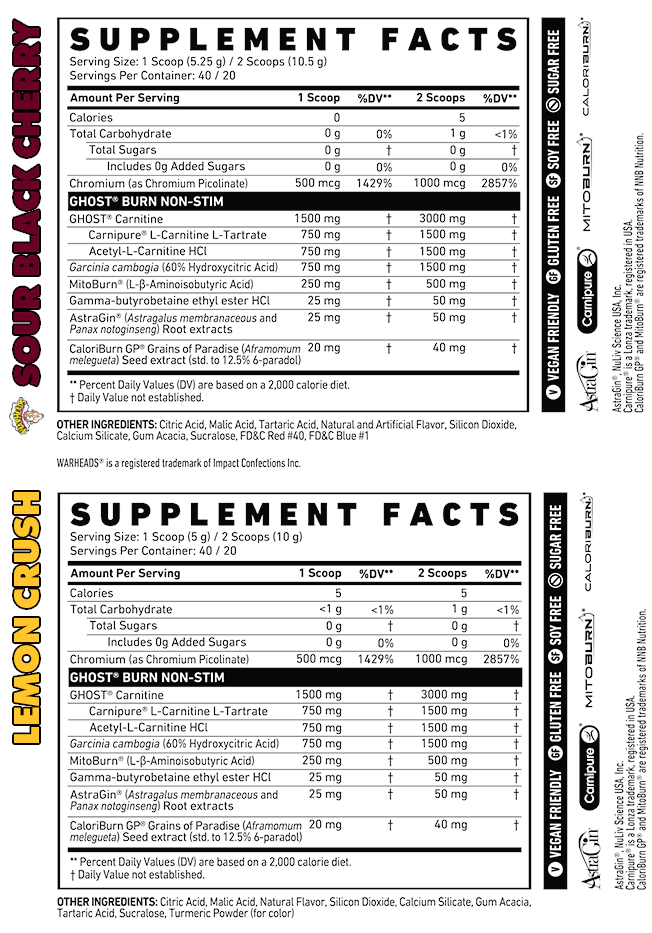
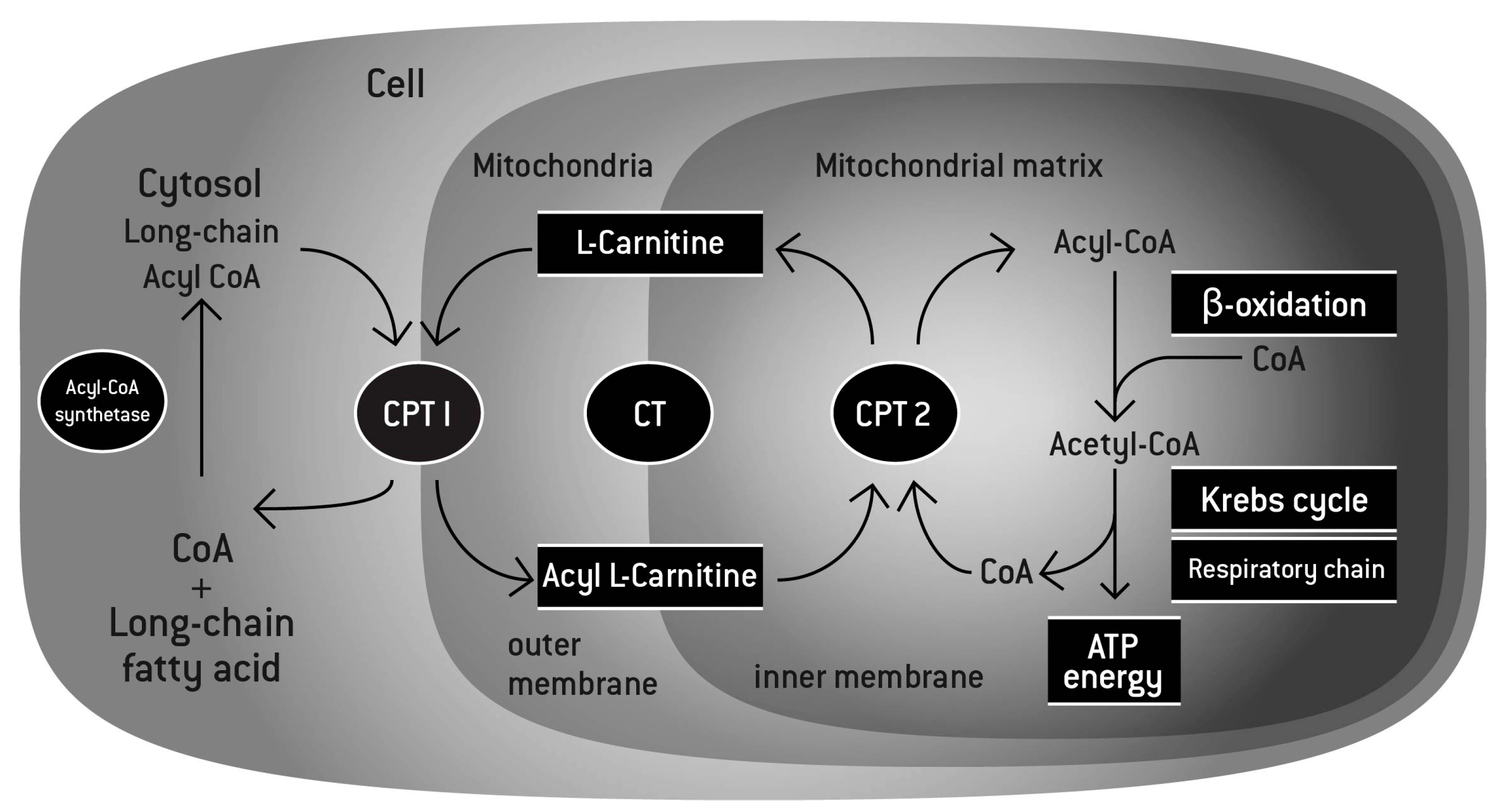
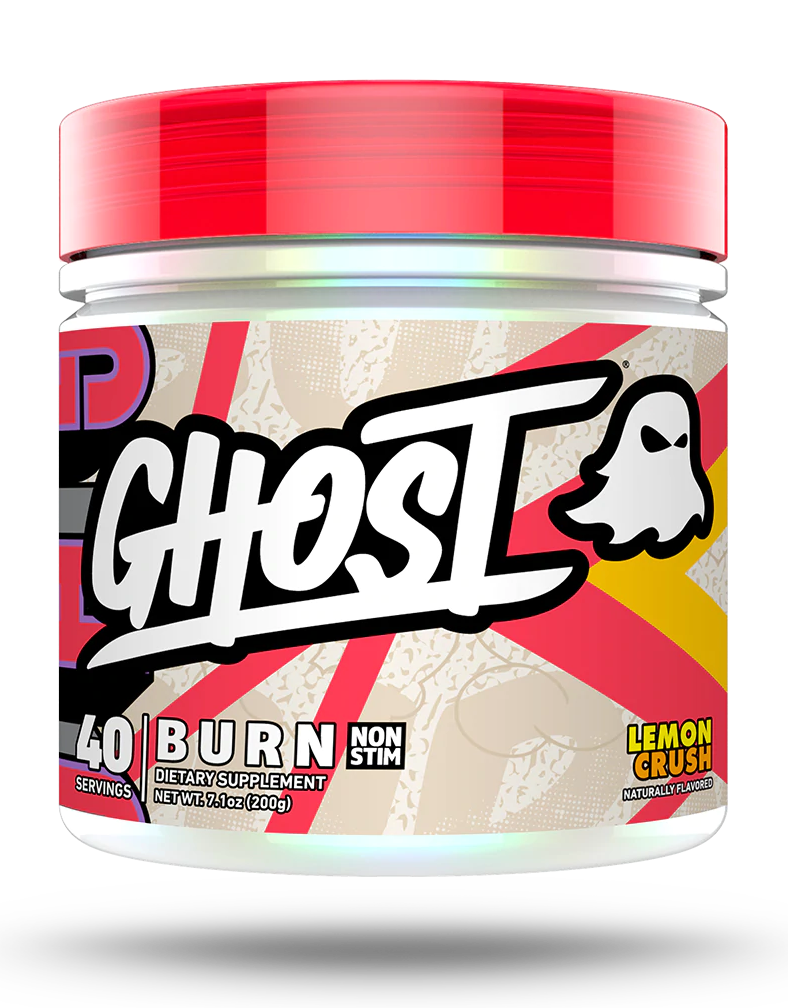
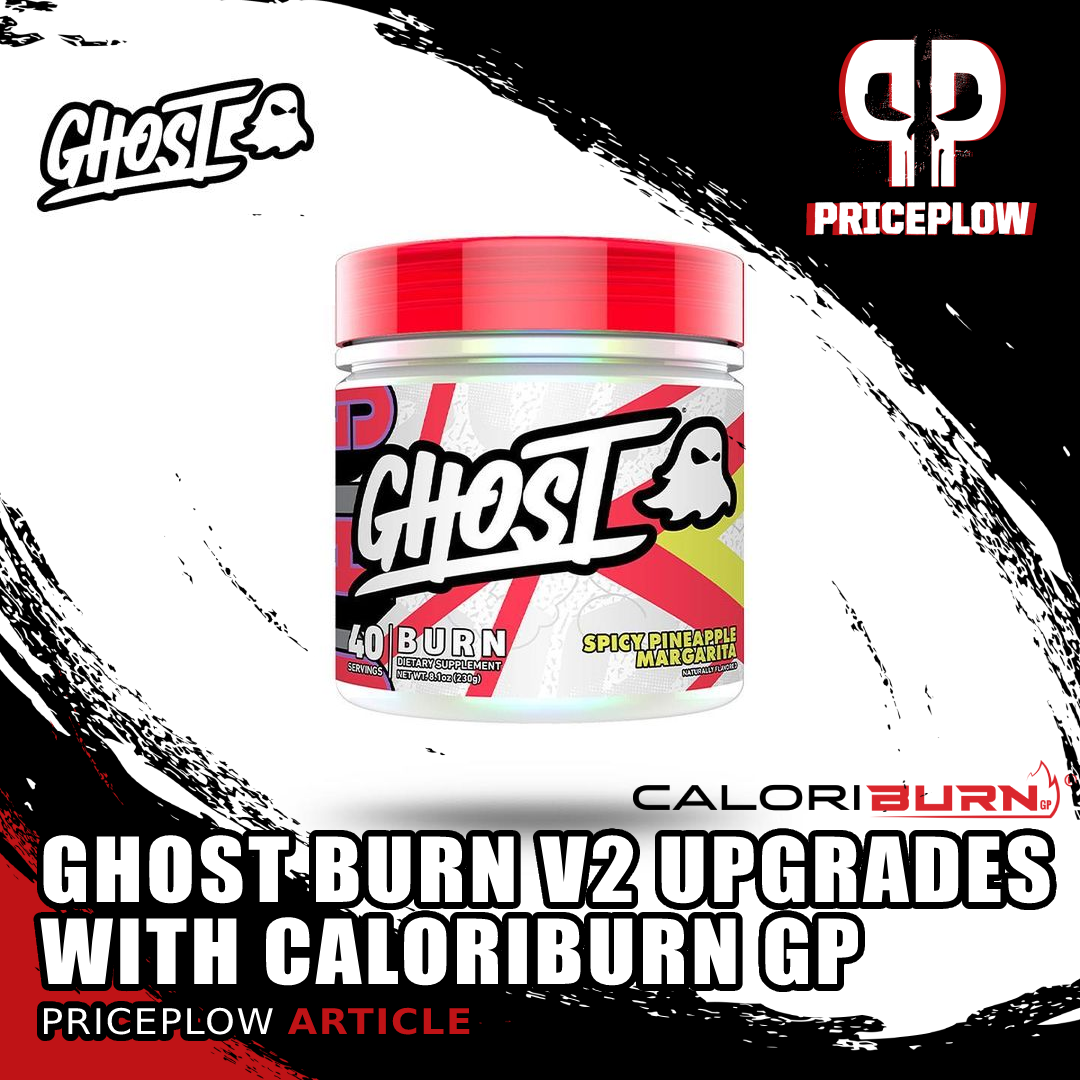

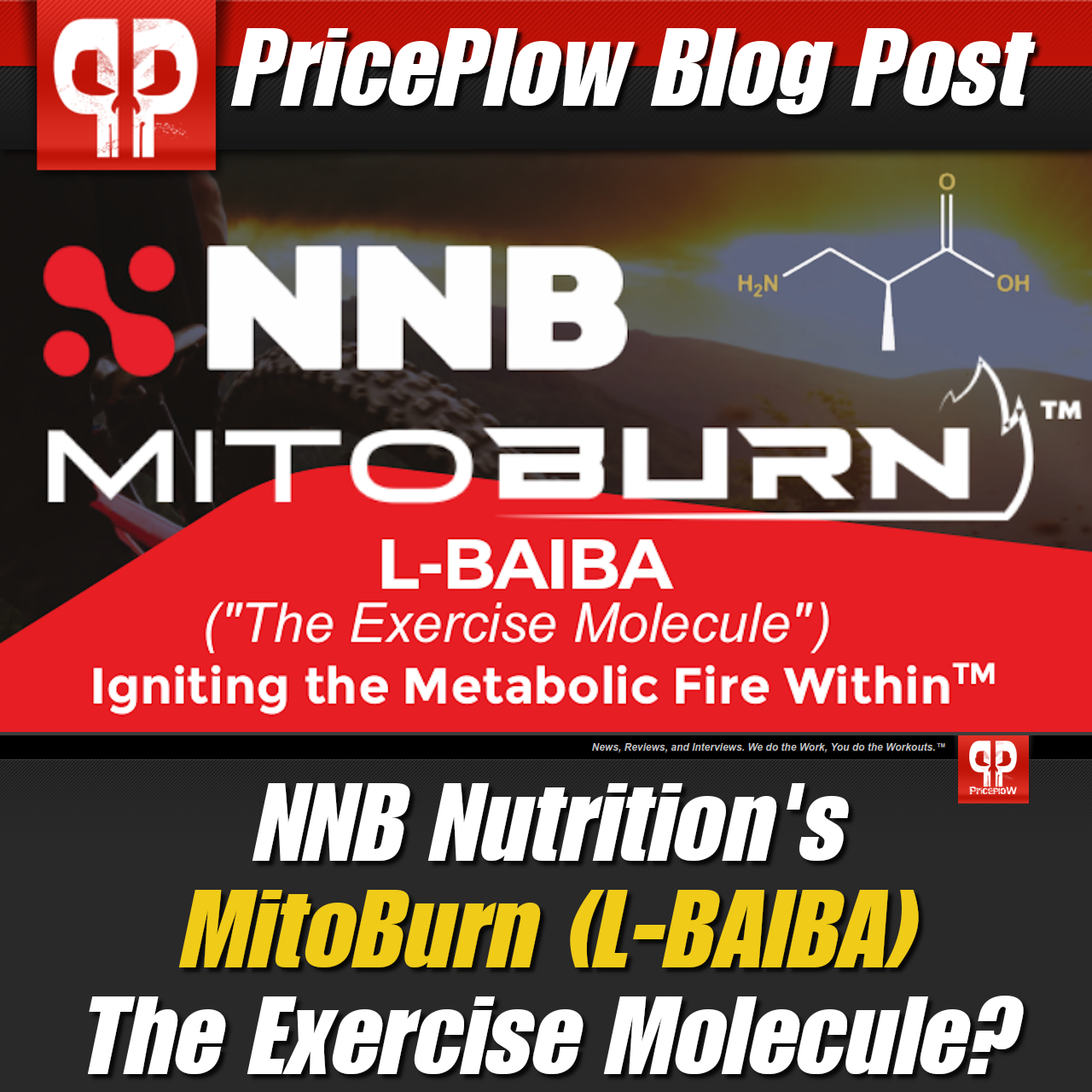
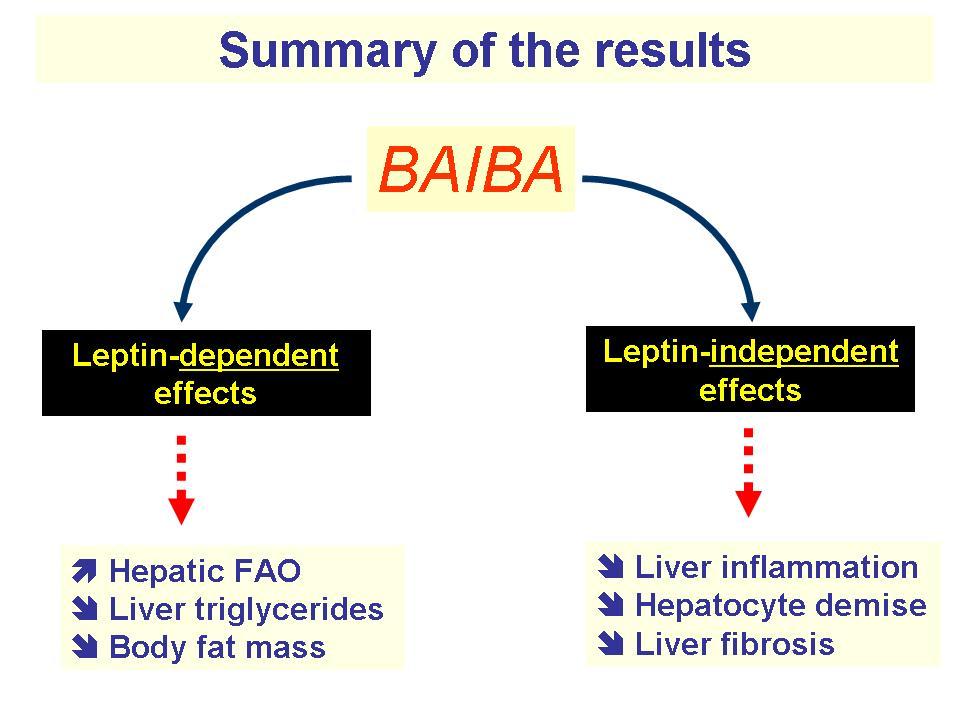
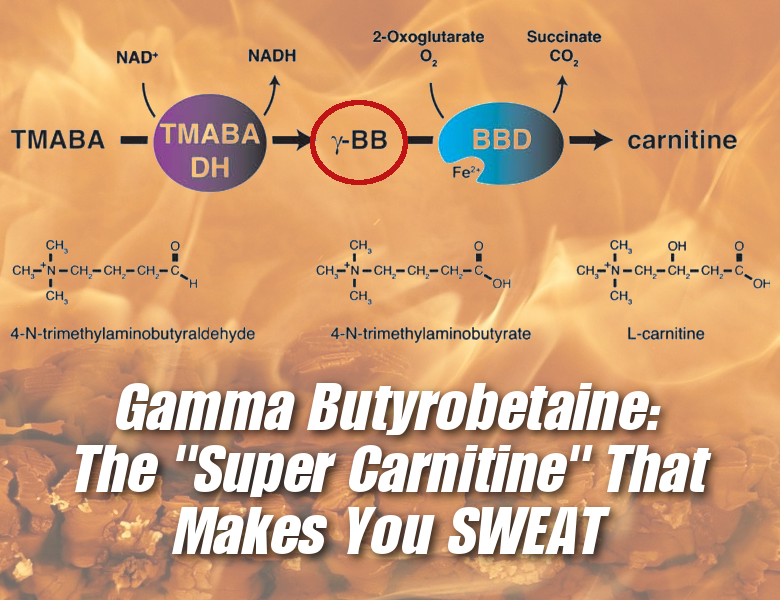
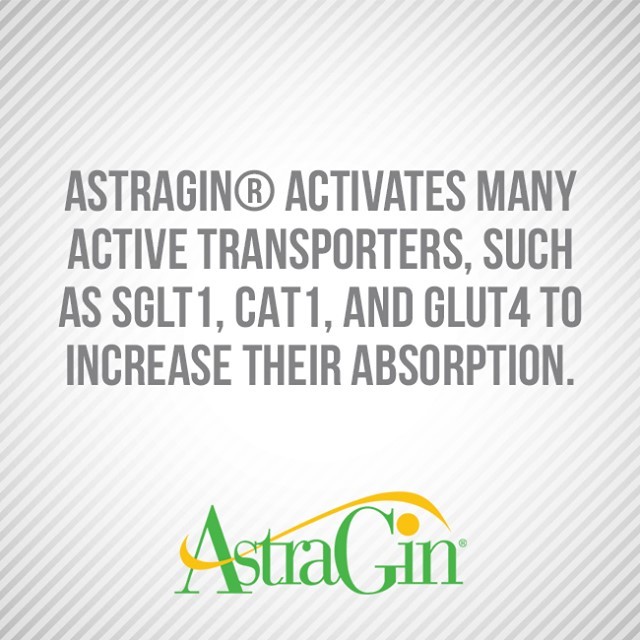

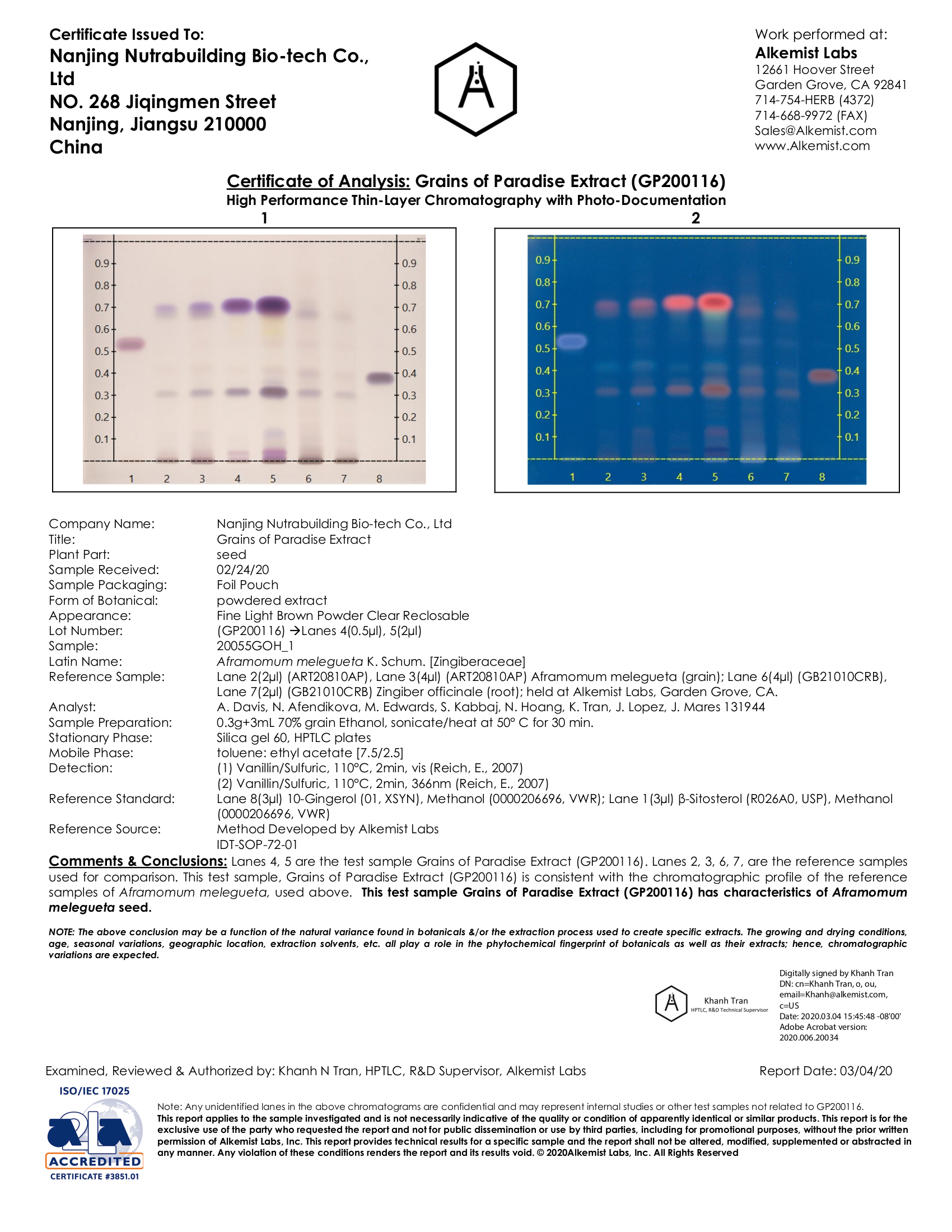
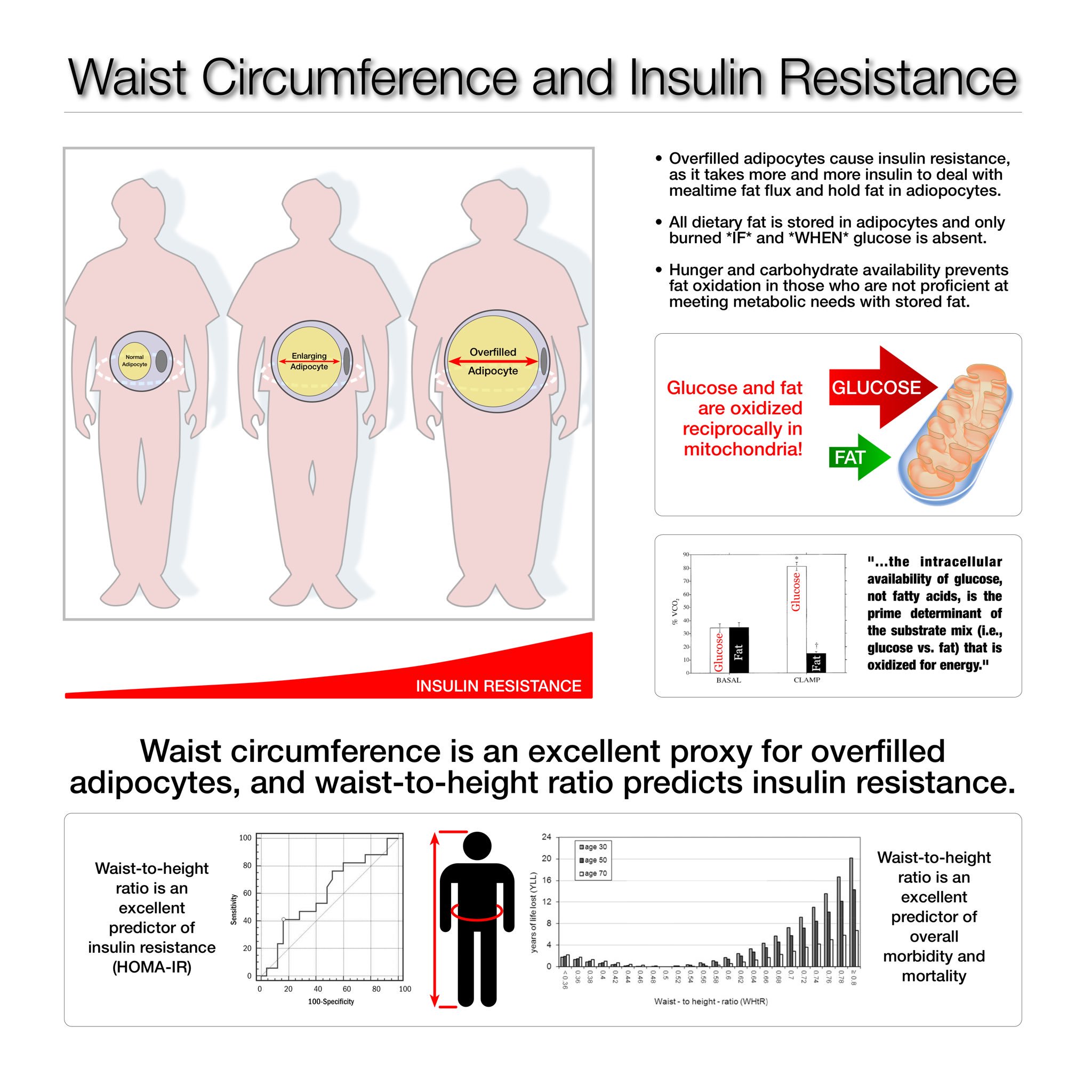
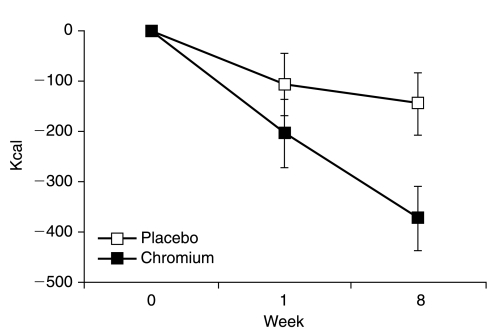

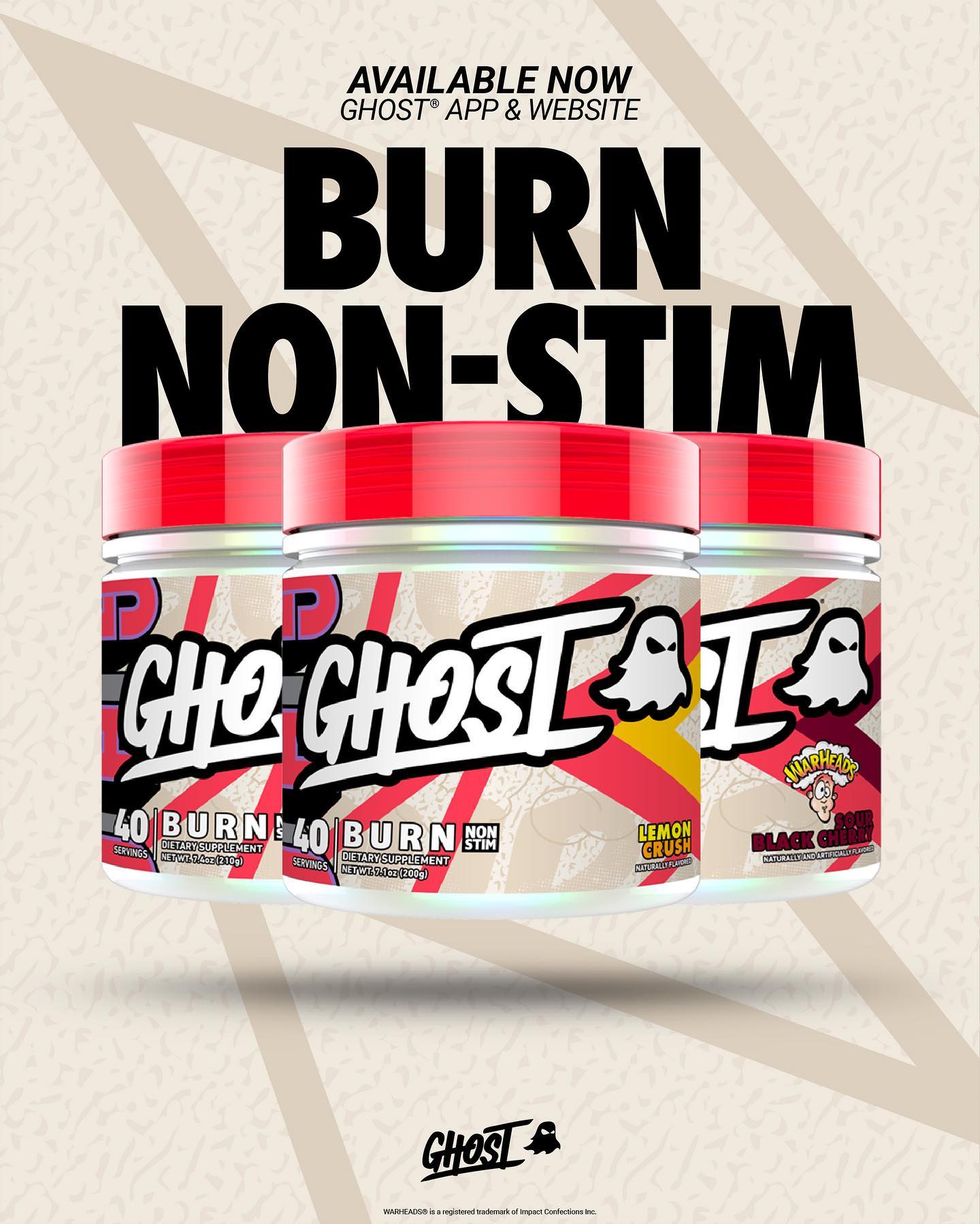


Comments and Discussion (Powered by the PricePlow Forum)